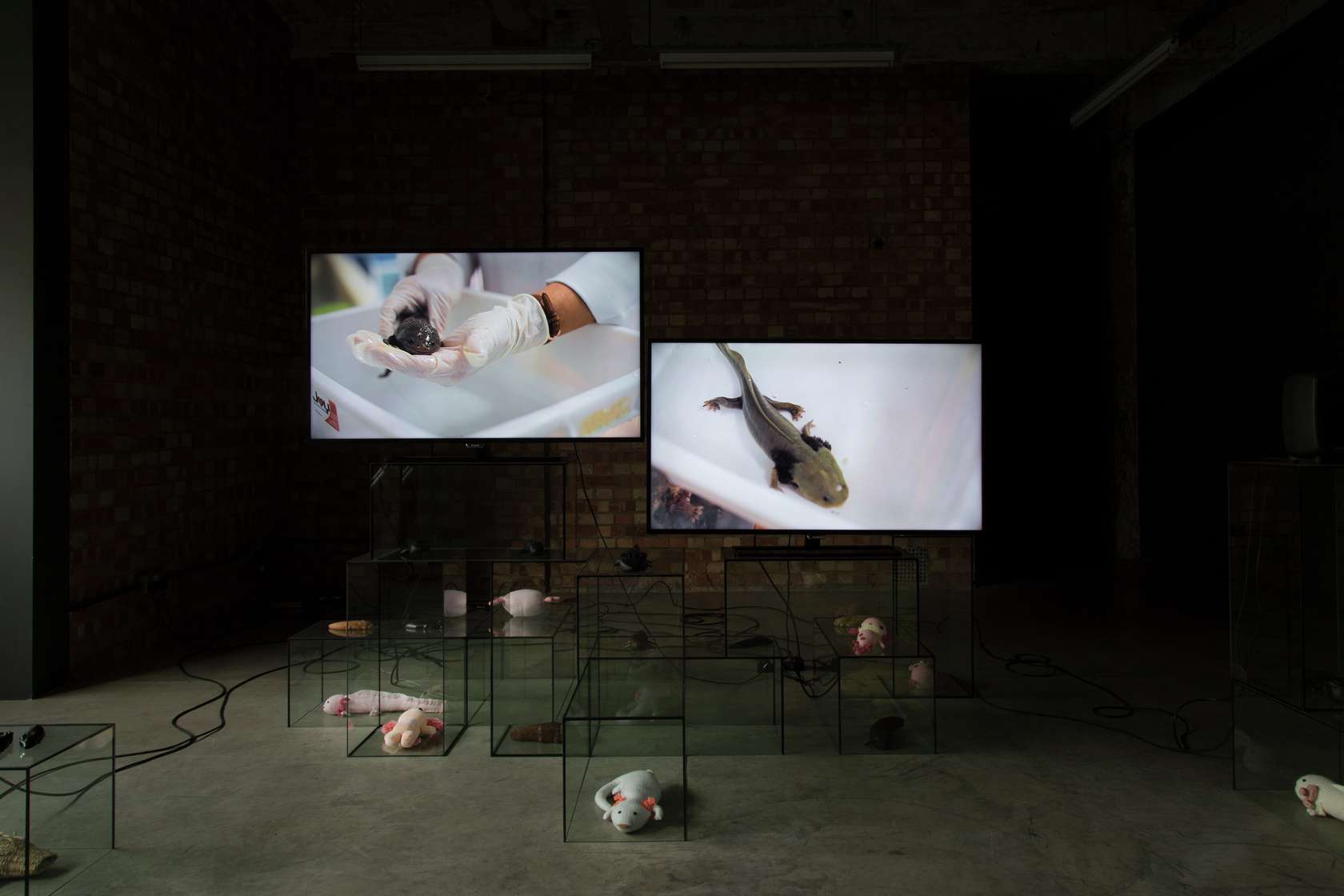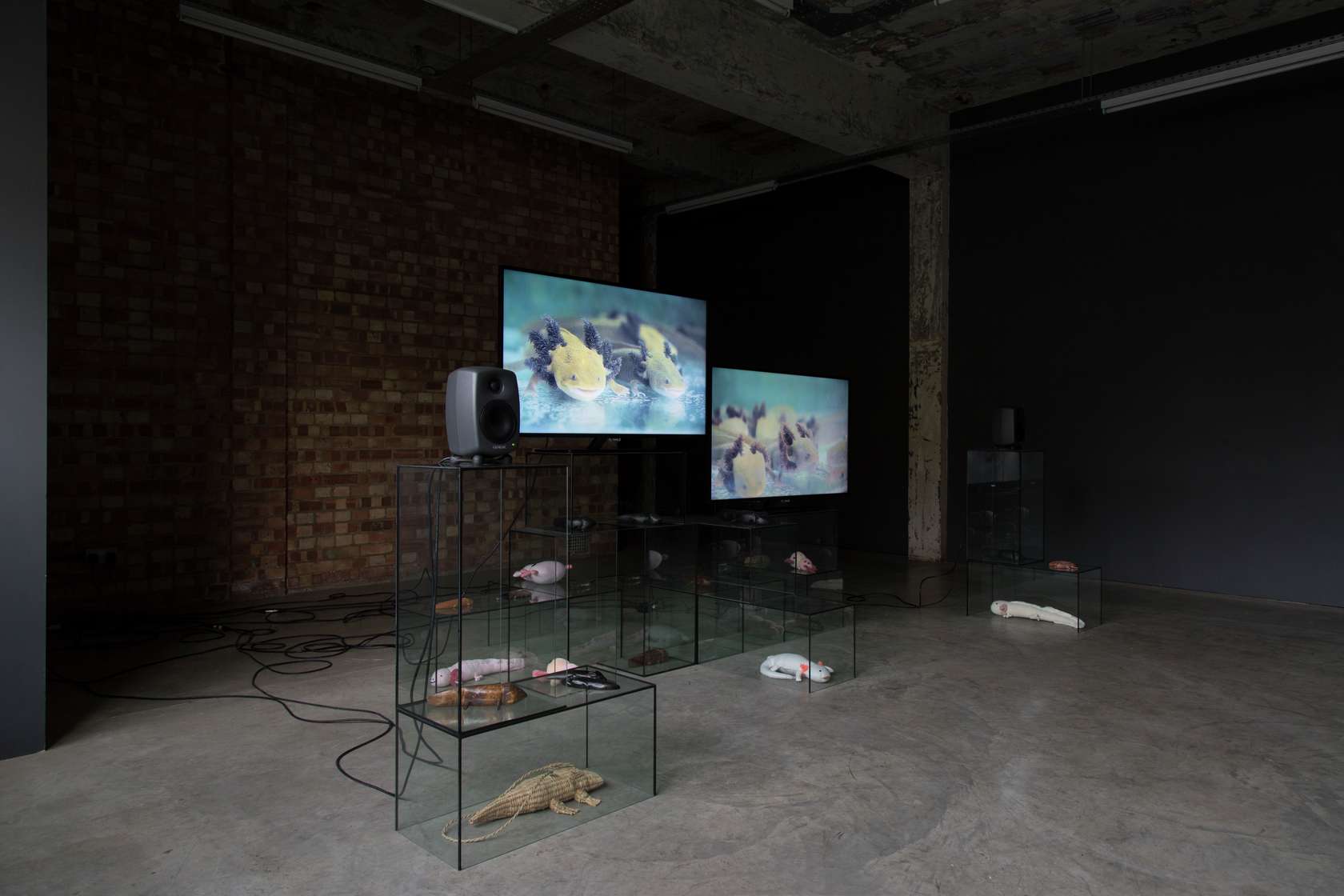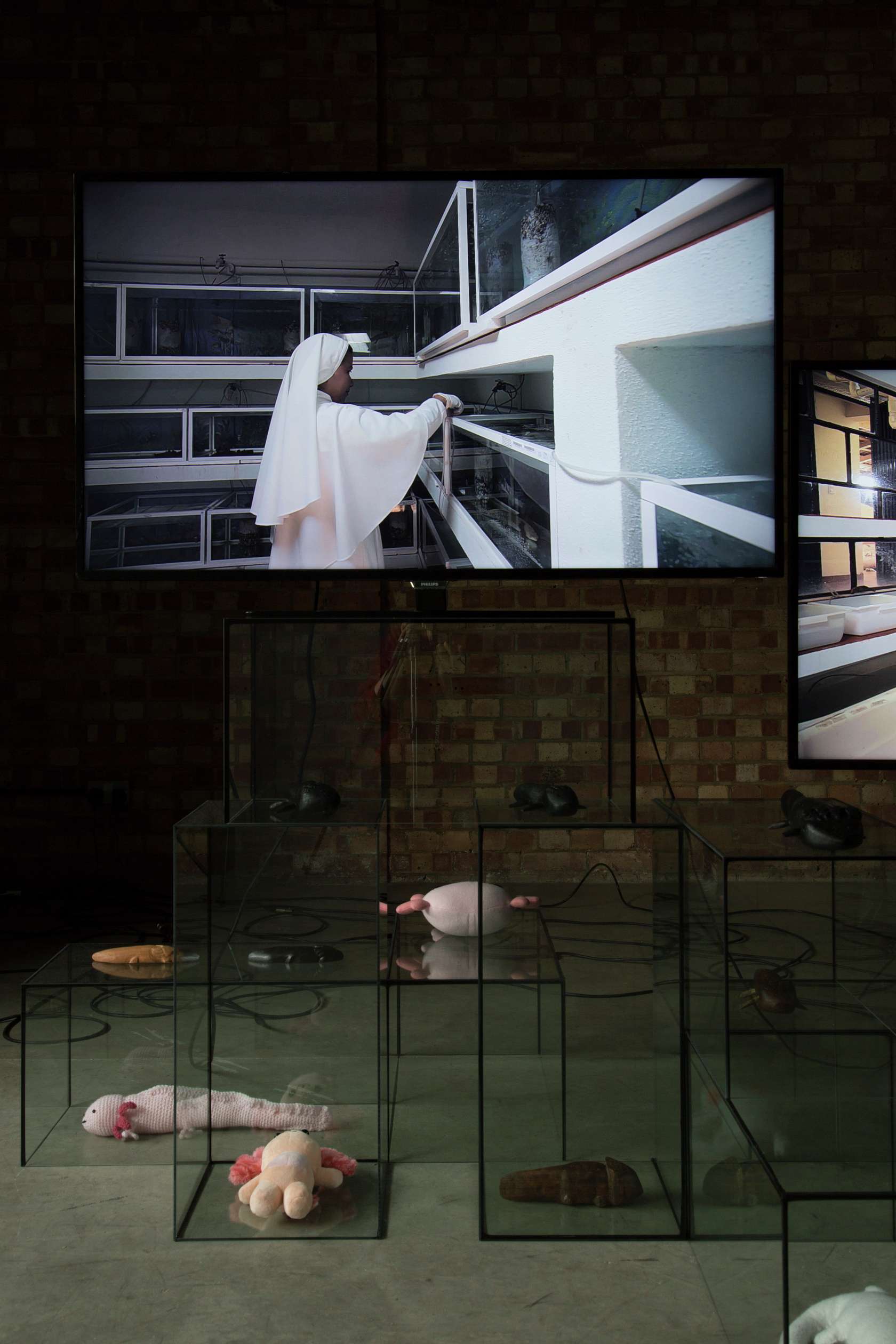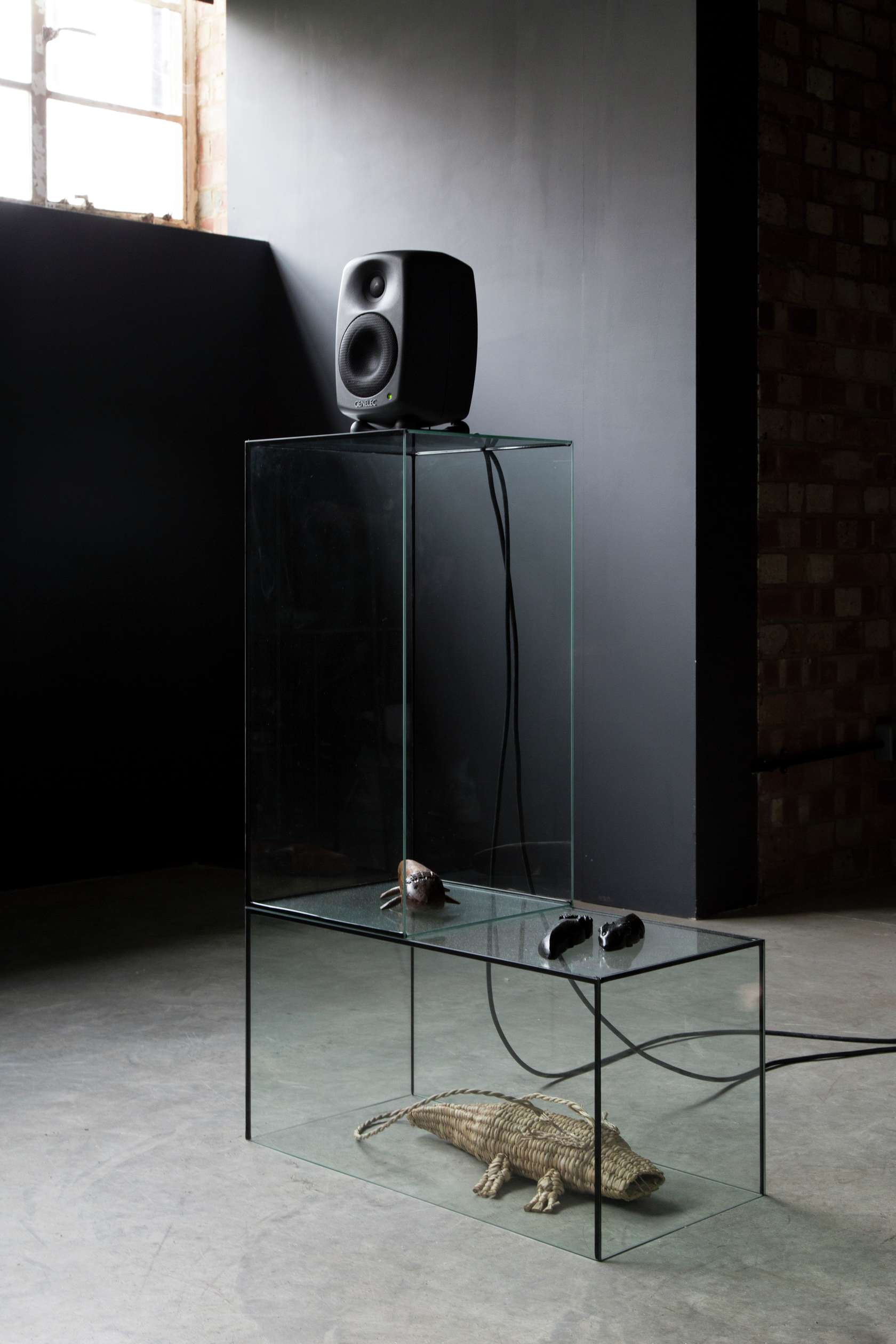-
 1/4
1/4
Salvatore Arancio, Their eyes have no lids
-
 2/4
2/4
Salvatore Arancio, Their eyes have no lids
-
 3/4
3/4
Salvatore Arancio, Their eyes have no lids
-
 4/4
4/4
Salvatore Arancio, Their eyes have no lids
The work's title is a quote from the famous text by Argentinian writer Julio Cortázar, which appears intermittently in this video not only as a verbatim script but as a literary tribute to one of the most enigmatic creatures of Mexican wildlife: the axolotl. Translated from Nahuatl as an “animal of water,” the axolotl is an amphibian endemic to the ancient valley of Mexico’s lacustrine system, which today holds one of the most populous cities in the world, Mexico City. Considered as a god by the Aztec culture prior to Spanish arrival, the axolotl has survived both European colonialism, and a growing urbanist explosion becoming one of the most representative emblems of the national culture, with a government and society that jealously protects it.
360 km from Mexico City, Lake Pátzcuaro and its Purépecha heritage is home to another little known axolotl cousin species: the achoque. Discovered in 1984 by a herpetologist from the Museum of Natural History in New York, the achoque was about to become extinct as it served as food for local communities around the lake. It is, however, its alleged curative property based on its advanced capacity for cell regeneration that caught the attention of a community of nuns from the historic Dominican order in the town. The monastery built an aquarium in their premises as part of a preservation campaign in partnership with the Chester Zoo and the University of Morelia, Michoacán’s state capital. Besides becoming the main centre for the preservation and research of this species, the aquarium is a workshop for the preparation of a medicinal syrup that includes honey, herbs and cells of the animal itself that is sold as a treatment for muscle aches or respiratory problems.
With special permission from the order, Arancio enters the private, most intimate spaces pertaining to the monastic life of the nuns and introduces us to their daily work serving the church and caring for the animal. Ethnographically, a set of adjacent paraphernalia objects, complement the exhibition and suggest conceptual and visual relationship between the achoque aquarium and the nun’s monastery.
These two spaces are linked by acts of worship, reverence and care. The animal’s hidden nature is as enigmatic as that of the daily life of a convent or monastery. Consequently, the existence of the species that we protect becomes a mirror of our own existences. As in Cortázar's text, we observe the achoque as much as the achoque observes us.
Alberto Ríos de la Rosa